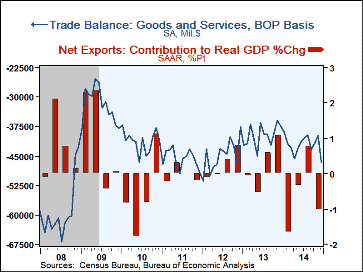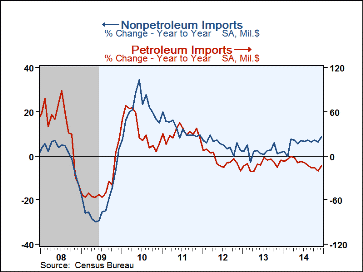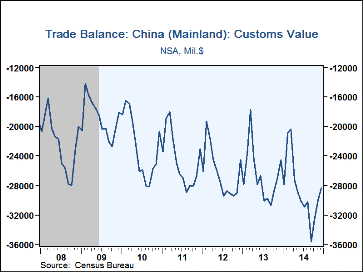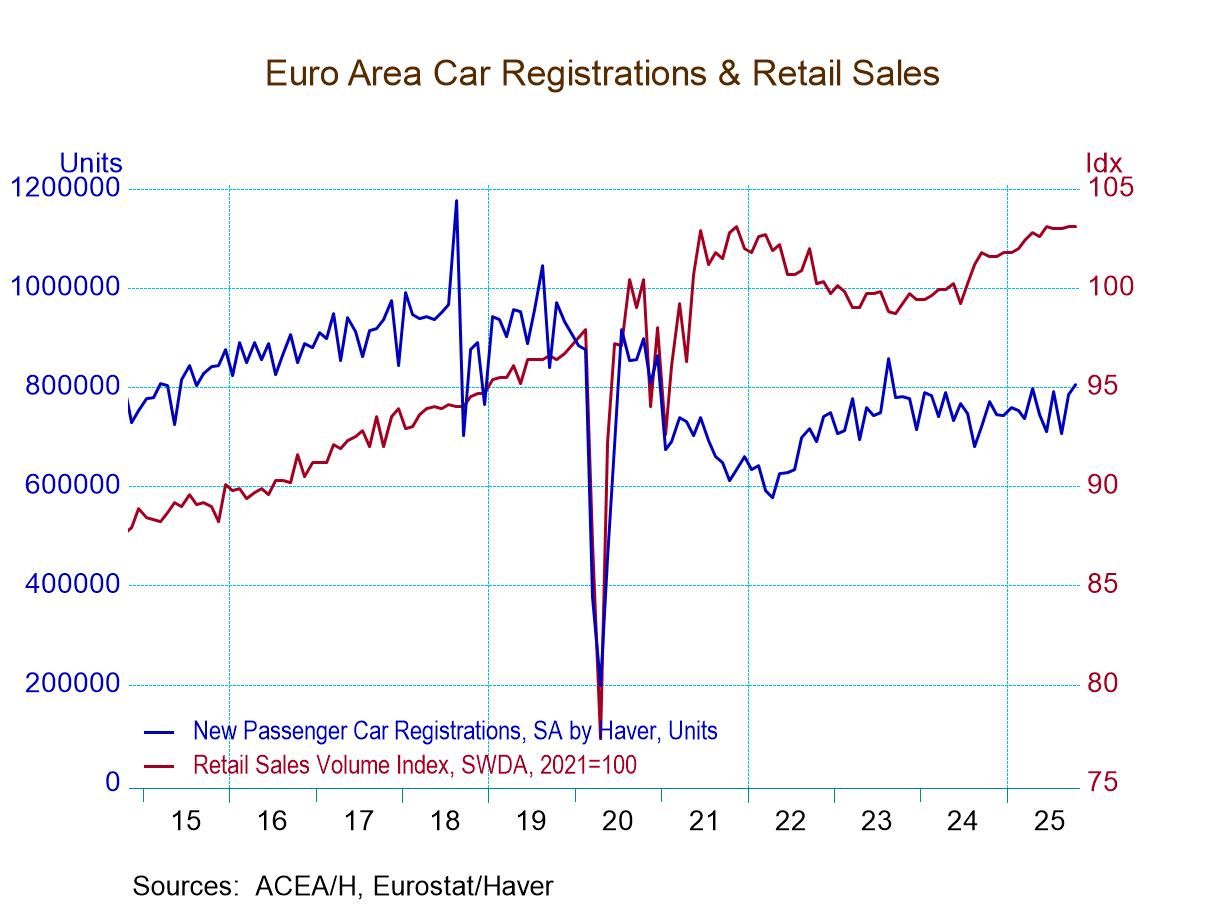 Global| Feb 05 2015
Global| Feb 05 2015U.S. Trade Deficit Widens Unexpectedly as Imports Jump
by:Tom Moeller
|in:Economy in Brief
Summary
The U.S. foreign trade deficit in goods and services increased to $46.6 billion during December from $39.8, revised from $39.0 billion. It was the deepest deficit since November 2012 and compared to $38.0 billion expected in the [...]
The U.S. foreign trade deficit in goods and services increased to $46.6 billion during December from $39.8, revised from $39.0 billion. It was the deepest deficit since November 2012 and compared to $38.0 billion expected in the Action Economics Forecast Survey. For all of 2014, the deficit deteriorated to $505.0 billion, giving up roughly half of its 2013 improvement. A 2.2% rise in imports (4.9% y/y) drove the December deficit's deterioration as it reversed a 1.8% November decline. Petroleum imports gained 7.7% (-13.4% y/y) despite a m/m fall in crude oil prices to $73.64 per barrel from $82.95. The quantity of energy-related imports rose by nearly one-third (9.9% y/y). Overall exports fell 0.8% (+1.1% y/y) after a 1.1% decline. For the year, exports gained 2.9% as they did in 2013. In constant dollars, merchandise imports rose 3.5% in December (8.8% y/y) while real exports were unchanged (4.7% y/y).
The decline in real merchandise exports reflected a 3.1% drop (+3.2% y/y) in industrial supplies & materials. Foods, feeds & beverage exports also fell 1.2% (-0.3% y/y) while nonauto consumer goods exports were off 0.7% (+8.6% y/y). To the upside, auto exports rebounded 2.8% (7.2% y/y) and capital goods exports gained 2.0% (3.3% y/y). Services exports increased 1.7% (3.4% y/y) as travel exports rose 1.5% (2.0% y/y). On the import side of the trade ledger, industrial supplies & materials increased 9.8% (8.5% y/y) and auto imports jumped 3.5% (8.8% y/y). Capital goods imports gained 0.5% (7.8% y/y) while nonauto consumer goods imports nudged 0.3% higher (7.9% y/y). Services imports increased 2.2% (4.4% y/y) while travel imports gained 3.2% (7.1% y/y).
By country, the deficit in goods with China declined to $28.3 billion, its least since April. Imports from China were up 8.1% y/y but exports fell 6.0% y/y. The trade deficit with Japan increased to $5.7 billion. Exports to Japan gained 9.9% y/y while imports rose 2.8% y/y. The trade deficit with the European Union deepened to $13.6 billion. Exports increased 6.5% y/y but imports surged 11.5% y/y.
The international trade data can be found in Haver's USECON database. Detailed figures are available in the USINT database. The expectations figures are from the Action Economics Forecast Survey, which is carried in the AS1REPNA.
| Foreign Trade (Current Dollars) | Dec | Nov | Oct | Y/Y | 2014 | 2013 | 2012 |
|---|---|---|---|---|---|---|---|
| U.S. Trade Deficit | $46.6 bil. | $39.8 bil. | $41.9 bil. | $37.4 bil. (12/13) |
$505.0 | $476.4 bil. | $537.6 bil. |
| Exports (%) | -0.8 | -1.1 | 1.6 | 1.1 | 2.9 | 2.9 | 4.2 |
| Imports | 2.2 | -1.8 | 0.7 | 4.9 | 3.4 | 0.1 | 2.9 |
| Petroleum | 7.7 | -11.3 | -0.7 | -13.4 | -9.6 | -11.0 | -5.5 |
| Nonpetroleum goods | 1.5 | -0.8 | 1.0 | 8.6 | 6.0 | 2.0 | 5.2 |
Tom Moeller
AuthorMore in Author Profile »Prior to joining Haver Analytics in 2000, Mr. Moeller worked as the Economist at Chancellor Capital Management from 1985 to 1999. There, he developed comprehensive economic forecasts and interpreted economic data for equity and fixed income portfolio managers. Also at Chancellor, Mr. Moeller worked as an equity analyst and was responsible for researching and rating companies in the economically sensitive automobile and housing industries for investment in Chancellor’s equity portfolio. Prior to joining Chancellor, Mr. Moeller was an Economist at Citibank from 1979 to 1984. He also analyzed pricing behavior in the metals industry for the Council on Wage and Price Stability in Washington, D.C. In 1999, Mr. Moeller received the award for most accurate forecast from the Forecasters' Club of New York. From 1990 to 1992 he was President of the New York Association for Business Economists. Mr. Moeller earned an M.B.A. in Finance from Fordham University, where he graduated in 1987. He holds a Bachelor of Arts in Economics from George Washington University.










